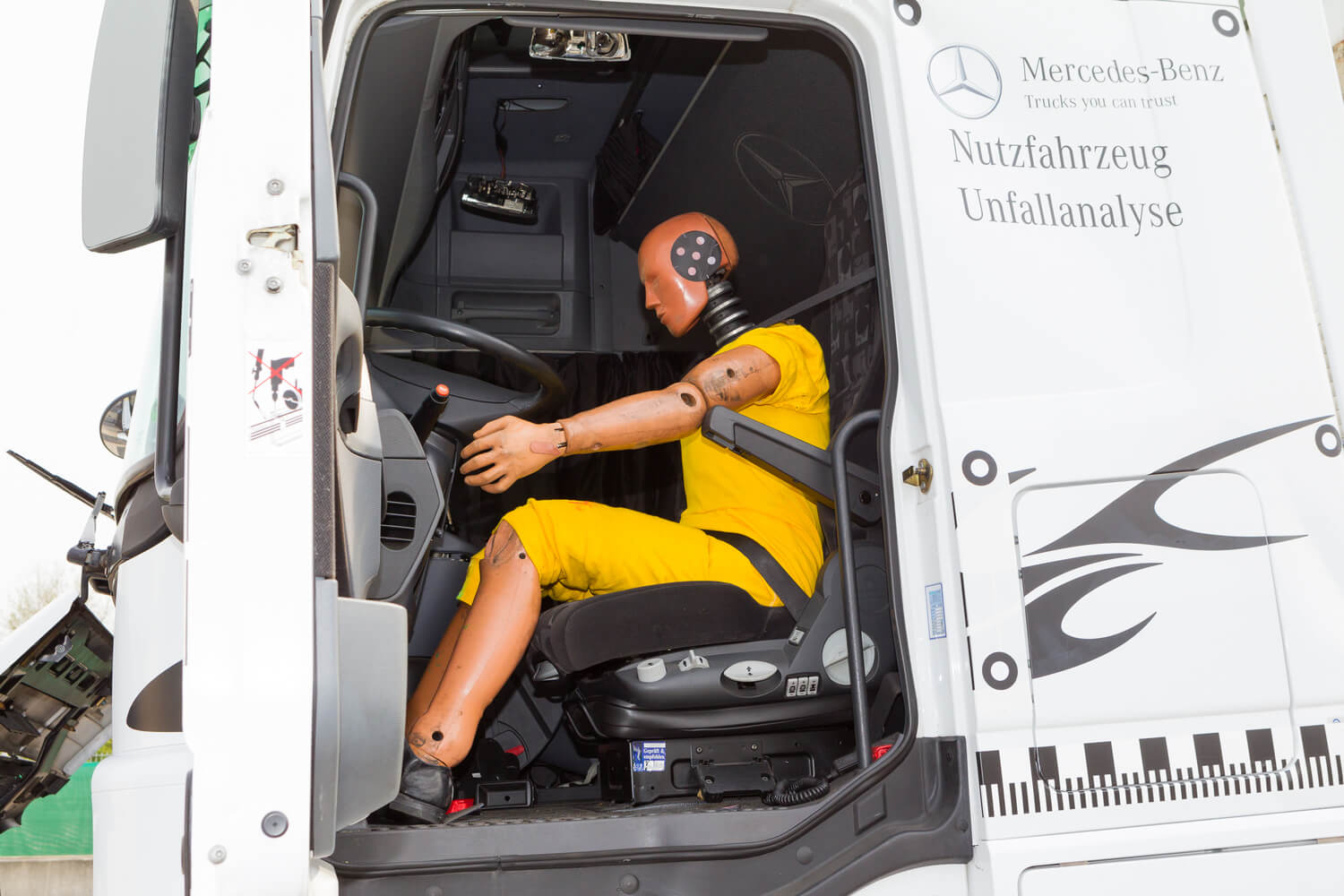Superheroes in the Name of “Vision Zero”
Author: Matthias Gaul
They get bumped, hurled and hit – all in the name of safety. Dummies provide important insights in a wide array of crash-, sled-, and catapult facilities as well as test rigs at the DEKRA Crash Test Center in Neumünster and the DEKRA Automotive Test Center in Klettwitz.
SID, BioRID, CRABI, Hybrid, THOR … Got it? Probably not at first. Only people familiar with crash tests and their dummies will be able to identify these abbreviations and designations correctly. To break it down: SID stands for the “side impact dummy” used in side collisions, while BioRID refers to the Biofidelic Rear Impact Dummy, which specializes in rear impact tests. CRABI is derived from “Child Restraint/Air Bag Interaction” and refers to a dummy used, for example, to test baby and child seats. The hybrid dummy, on the other hand, was designed specifically for frontal impacts. THOR, the Test Device for Human Occupant Restraint, is the latest, most human-like dummy.
Most of these superheroes that come away from a devastating crash with only minor injuries are also regularly on duty at DEKRA – for example at the DEKRA Crash Test Center (CTC) in Neumünster, which celebrates its 30th anniversary in 2021. “Dummies are indispensable for increasing road safety as defined by “Vision Zero”, i.e. traffic in which there are as few accident fatalities and serious injuries as possible,” emphasizes Peter Rücker, Head of Accident Research at DEKRA Automobil GmbH.
The life-size anthropomorphic test devices, as dummies are officially known, have become increasingly lifelike and sophisticated since their introduction in 1949. Today, DEKRA’s crash experts have a whole family of dummies at their disposal – first and foremost the 50-percent-man with a height of 1.75 meters and a weight of 78 kilograms. In addition, there’s the 1.88 meter tall 95-percent-man weighing 101 kilograms, the 1.52 meter tall 5-percent-woman weighing 54 kilograms, as well as children’s dummies in several sizes and weight classes.
“We thus cover a wide range of scenarios and, with the help of up to 250 sensors now integrated into the dummies, gain important information about how a car accident can affect the various parts of a person’s body in reality,” says Thilo Wackenroder, who heads the DEKRA Crash Test Center in Neumünster. In recent years, the biofidelity of the dummies in particular has increased. In other words, the behavior of the human body in an accident is being mapped more and more meaningfully by advanced dummy technology.
More than 150 times a year, the test engineers in Neumünster run crash tests according to all current national and international standards. The center in Neumünster carries out crash tests for occupant protection in accordance with Euro NCAP, US NCAP, and other international consumer standards. In addition to the facility on the outdoor grounds, another indoor crash facility is also available, in which DEKRA crashes electric vehicles and vehicles with gas or hydrogen drive systems into the wall, regardless of the weather.


Since November 2002, DEKRA has also been regularly carrying out component tests and sled tests at the DEKRA Automotive Test Center (DATC) in Klettwitz – up to 1,000 per year. “At our sled facility, we can carry out dynamic tests on child restraint systems, for example,” explains Olaf Kretschmann, Head of Passive Safety. The modular design enables rapid adaptation of the desired impact direction – whether front, side, or rear. High-speed cameras, in conjunction with modern software, deliver excellent evaluation and analysis videos – at up to 5,000 images per second. The special features in Klettwitz also include mobile test facilities or “target movers” for development-accompanying testing of active systems for the protection of pedestrians and cyclists, for example. In these tests, unprotected road users are simulated using soft targets made of foam. Even in the event of a crash, the tested vehicles remain undamaged. All kinds of accident-prone traffic scenarios can be simulated this way.
Whatever the test setups in Neumünster or Klettwitz, and whatever type of dummy or technology is used: The declared goal is to advance the market launch of accident-preventing technology and thus increase safety on the road. A goal that DEKRA is pursuing sustainably at both locations.


